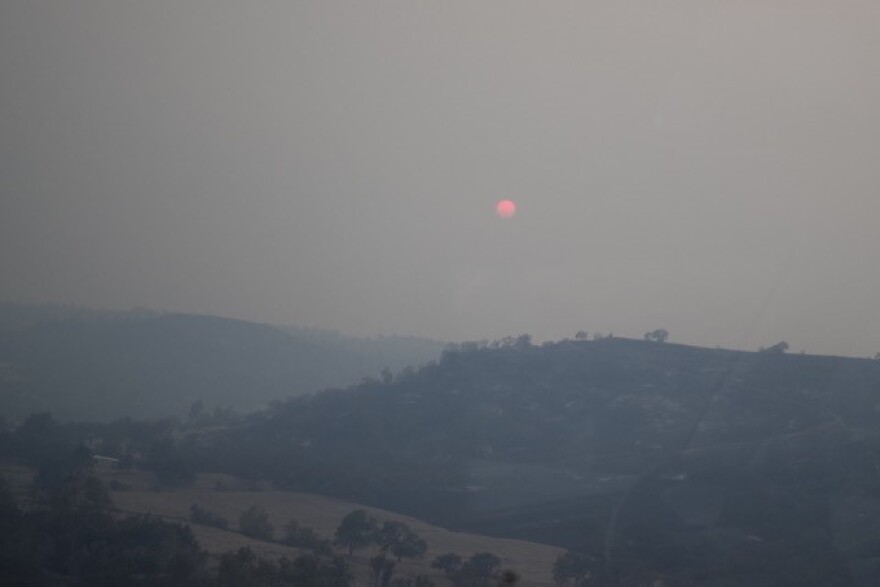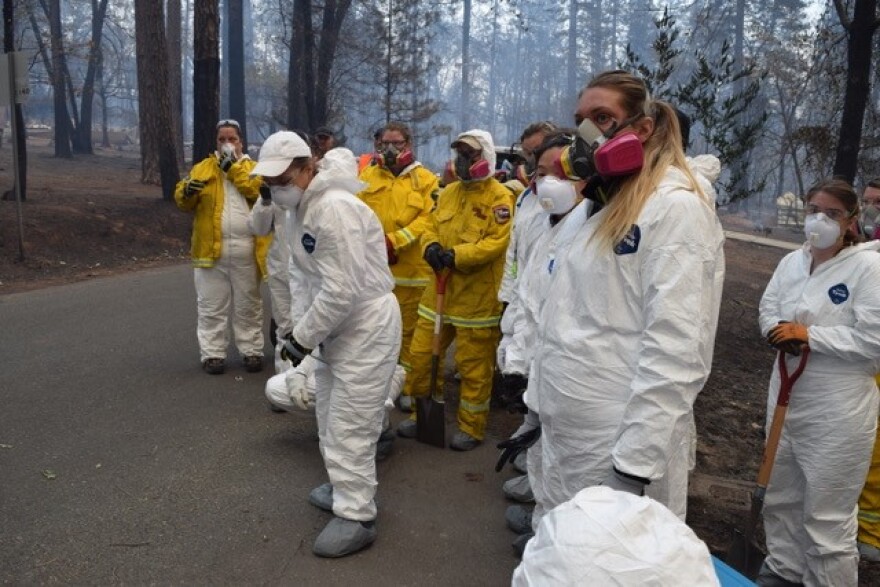November 8, 2019 marks the 1-year anniversary of the start of the Camp Fire in California, the most destructive and deadliest fire the state has ever experienced. A year ago, the University of Nevada, Reno’s forensic anthropology team was called on to help identify human remains. KUNR’s Stephanie Serrano sat down with Marin Pilloud and Kyra Stull who assisted a team of doctoral students, volunteering their expertise and time in Paradise.
Stephanie: Marin and Kyra, you two are the only certified forensic anthropologists in the state of Nevada. What does that mean and how does it feel?
Marin: It's a great resource for the state of Nevada. They can call on us to help resolve cases of missing persons or help identify individuals. There are about 90 practicing, board-certified forensic anthropologists in the United States.
Kyra: I think what Marin and I can offer is unique. While we are both board-certified forensic anthropologists, we also come from pretty diverse backgrounds, so not only do we have the skillset of the forensic anthropology, but we also come with two different perspectives. It’s good for working with law enforcement and medical examiners, but it's also great for our students.
Marin, how quickly did you all have to get to the scene of the fire and what was your team's responsibility?
Marin: So, we received a call Saturday night, the day after the fire had started, and we were there the next morning. We quickly mobilized [and] sent out a lot of texts, phone calls and emails. We organized the cars and we met up on campus. We picked up our gear, shovels, cameras, screens, buckets and other things we might need for the recovery efforts. We all drove to Chico, got our assignments for the day and started to work with law enforcement to do the recoveries.
When you're out in the middle of a devastating situation, what exactly does a forensic anthropologist do? What are you looking for?
Marin: As forensic anthropologists, our primary role was in identifying human remains versus animal remains or burnt plastic or anything else that might take on the appearance of human remains.

When you first arrived on scene, what did it look like?
Marin: It's not something that you see every day. It was striking to all of us, to see the severity of the situation and how much that community lost. It was difficult to see and kind of difficult work.
Kyra, what were the team's first reactions when you all arrived?
Kyra: I think it might be one of the few times in my life where I was speechless; it really does take your breath away. I think everyone just needed their own time to realize the devastation of it, but we are trained to assist in this type of situation so everyone is ready to go. That's what our training is in, and we're doing it because we want to do it and we are capable of it. We have a skillset that is really unique.
Do you and your students talk about the mental health aspect of the work you are doing?
Kyra: Yes. I think one of the things that helped our students in the situation is that they were all in it together. They were all working together; they all experienced it together. I think having that community just within us was really beneficial to them.
What do you think the students learned?
Kyra: I don't think that there's an opportunity that Dr. Pilloud and I could ever give in terms of training that would have ever compared to the training that they received on sight in Paradise, California. They not only got to have the forensic archaeological and anthropological experience, but they also got experience working with different people from different law enforcement agencies and working with people from different counties, states and really seeing perspective from all over.
Marin, with California's current fires, what is the forensics team doing to prepare in case the team's help is needed again?
Marin: Hearing about some of the fires that are going on, we are really hopeful that everything can be mitigated before something like that happens again. There are lessons to be learned from what happened last year. UNR is always ready to go if we are needed. We have the equipment, teams and phone lists so we can go out on a short notice if we need to. I really hope that this year, none of that is needed.
As a note of disclosure, the license to this station is owned by the Board of Regents to the Nevada System of Higher Education.






